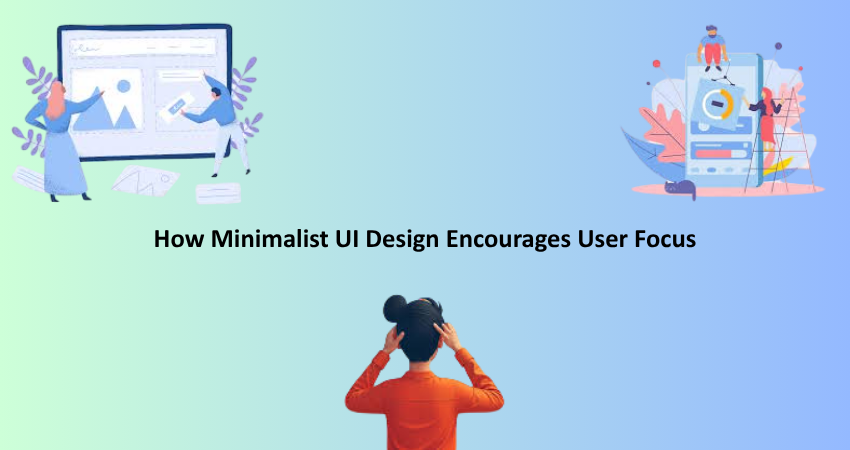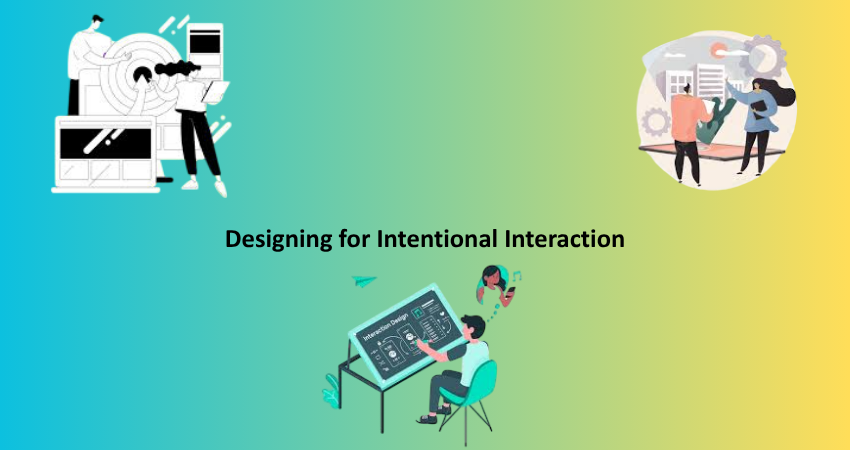
Introduction
Attention in the arduous world of the digital economy is a quickly fading and very rare commodity. As designs become more and more complex, the thrust toward a minimalist UI design is equally increasing. The philosophy of minimalism in UI design aims for clarity, simplicity, and a functional intent that allows users to navigate through content easily and focus on the main tasks. This user-tailored approach enhances the looks and usability, reducing cognitive load, thereby increasing engagement.
Minimalist UI design is about ensuring functionality is there, but it is the function itself that comes first. Clean layouts, unobtrusive navigations, and limited palettes direct user attention where it really matters. Thus, minimalism fits naturally into user-centered design, wherein anything designed must always justify its existence. As mobile-computing experiences are gaining ground, together with trends in the attention economy, minimalism UI assumes a more compelling role in facilitating focus and enhancing the overarching user experience.
The Principles of Minimalist UI Design
Emphasizing Simplicity and Clarity
At the heart of minimalist UI design lies simplicity. A minimalist interface does not overwhelm users with choices; it distills features to the very essentials. In other words, visual noise like superfluous buttons, redundant icons, and extraneous text should be eliminated. Clean lines with generous whitespace and effective typography harmoniously lead the user through the interface. Designers follow clarity of the target object, so the user finds what is needed in very little time with very little effort.
Such simplicity makes digital products more unfamiliar and fortifies the self-esteem of the users. Faced with few choices or little visual noise, these digital users remain focused on their core tasks. Realistically, the art of the minimalist UI rests in a good-looking page with only a single strong call to action, a brief navigation menu, and well-calibrated colors that fill the space altogether. These decisions will guide the users in a subtle way that requires no conscious effort on their part and lets the users remain focused on their ambitions.
Prioritizing Purposeful Design Elements
Every unit in a minimalist UI must provide a distinctive function. The designer has to ask him/her self the following: “Is this component really adding value?” If No, it should get rid of it. This also includes images, animations, and interactive elements-all should be considered contributions to the user’s journey. Design of minimal UIs involves complete knowledge of user behavior as well as the design decisions in such a way that they are closely aligned with the user’s needs and expectations.
Such purposeful design nurtures an experience that is as elegant as it is effective through developers and designers. This intentionality adds to user enjoyment in the sense that lesser-cool distraction affects each individual. Instead of having several buttons performing overlapping functions, a minimalist interface would probably include a single multifunction control.
These types of design choices make workflows cleaner and drive the main objective of the application, which should enhance the likelihood of task completion by users and, therefore, retention.
Enhancing User Focus Through Visual Hierarchy

Leveraging Whitespace Effectively
Whitespace, also recognized as breathing space, proves itself a very powerful resource in the design application of minimalism. It really provides breathing space to the content and segregates the elements from each other, thereby creating a clear-cut visual hierarchy of the application. When so used, effective whitespace guides the user with a sense of movement through the page without needing direct signals and directs attention to important areas. This makes the messaging visually more understandable on pages that have a lot of information or need complex interactions.
Within wider white spaces, a user can get information at his chosen speed, not bombarded jerky clusters of text and cluttered images, but in fact very clean and digestible layouts. Besides, this calm aesthetic smoothens stress and improves concentration, especially in mobile situations where screens are becoming smaller and smaller. But on the contrary, good spacing is just as supportive of touch-ready interfaces, keeping intuitive interaction views and accurate event occurrences even on limited mobile screens, all in all improving user experience.
Establishing Clear Focal Points
The major aim of minimalist UIs is to draw all the attention of the users toward its important areas. Its strength can be shown through size, color, contrast, and positioning. For instance, a bright-colored button for action and placed permanently would say importance immediately without explanations. In place, one or two such focus points are commonly placed in minimalist UIs, thus ensuring that no user tends to distract with different competing elements.
When de-cluttering the added features, the remaining components seem more important. They make one smarter and easier to navigate through the application. With focal points clear, users can efficiently accomplish actions required. That’s probably going to end most experiences positively and promote a few of that all-important business metrics: conversion rates and customer satisfaction.
Improving Usability with Minimalist Interfaces
Simplifying Navigation Structures
Complex interface designs risk falling into the trap of having overly complicated navigation schemes. In maintaining the minimalist approach, UI design serves to simplify menus and constrain the number of available options at any given time. Navigation is presented in a streamlined fashion, usually implementing hidden or expandable menus in order to keep the interface as clean as possible until users express intent to pursue their exploration any further. This set-up assists in preventing user distraction as it lowers cognitive overhead.
For example, in a minimalist site, there might be a top-level navigation bar containing three primary links only, with all additional content hierarchically nested under them. Hence, an approach that further minimizes decision fatigue encourages users to find information in a more intuitive manner. Consistency in navigational patterns between various sections of the interface helps reinforce usability. Users aren’t put in a position of relearning the ways of interacting with different parts of the site or app, forging an even more fluid and focused experience.
Reducing Cognitive Overload
Information overload is defined as a situation in which there is too much information or too many choices provided at once to a user. Minimal UI design is an antithesis to this sensation and is based on the reduction of non-essential content and the presentation of only the most relevant information. The premise here is that the user can better digest information and arrive at decisions faster. This means carefully designing the use of icons, text, and interactive elements to avoid overwhelming the user.
In the end, a lesser burden on the user’s mind ensures a smoother journey. While such an interface minimizes user effort in interpretation and decision-making, the user can leverage this saved effort in pursuing the intention established at the journey’s start. For example, a shopping application showing featured products or user-specific recommendations will distract users and drive engagement with their clicks. Users will feel gratified and come back and thus help build brand loyalty.
Designing for Intentional Interaction

Encouraging Goal-Oriented Behavior
Minimalistic UI design is known to promote goal-directed behavior by eliminating distractions. One frequent visitor to digital products also usually comes with a set goal without regard to whether it is to purchase, read an article, or submit a form. Minimalism opens all entryways to those actions, letting them take center stage on the interface. With this, tasks will no longer take too long to complete and fewer people will abandon them.
Competing constituent has been cut off so that one can learn to channel attention towards what really matters. For example, in a minimalist checkout page, the preferred layout will be designed to display payment methods and order summary prominently, while downplaying the visibility of advertisement banners or other unrelated content. This kind of clear direction makes the user more effective and fosters confidence in the interface. Indeed, if a user feels his or her time is at least partly treasured, they would use it judiciously with some pages and come back.
Reinforcing Meaningful Engagement
Minimalist UI design may increase engagement through highlighting content and functionality in clear and purposeful ways. A minimalist design invites users to interact only with things that matter, instead of bombarding them with every conceivable interaction. Such interactions can be meaningful, like reviewing and leaving a comment or setting up one’s user profile.
Extended periods of intrinsic user control over the experience coincide with periods of extrinsic support from the interface, which is, in fact, the best engagement. An example might be onboarding flows that follow the minimalist philosophy and guide users through just a couple of steps, instead of cramming them with forms. The more these users succeed, the more they are likely to gain a sense of accomplishment. Users will feel that they’re building a relationship with the product as an ally instead of an enemy, and this will greatly translate into user satisfaction and retention over the long haul.
Conclusion
Dreaming a minimalist UI design is just as powerful a strategy for instilling user engagement as for creating an experience of digital superiority. Truly, minimalist interfaces, staffed with purposeful elements and clearly defined visual hierarchies, help users stay oriented and engaged. The design philosophy is even supportive of usability, cognitive overload, and efficient, goal-oriented behavior such that the paradigms governing its use bombard high technology with a plethora of digitally interfaced systems – a range of consumer-oriented products.
In a chaotic digital environment, once again, to cut noise has become a competitive advantage. For example, minimalist UI designers and authors tend to produce products that consumers will trust even before they know its worth. Hence, as time passes, the norm of user’s ever-growing expectations from the digital world would probably still bring a strong foundation for minimalist UI design in effective user-centric digital design.